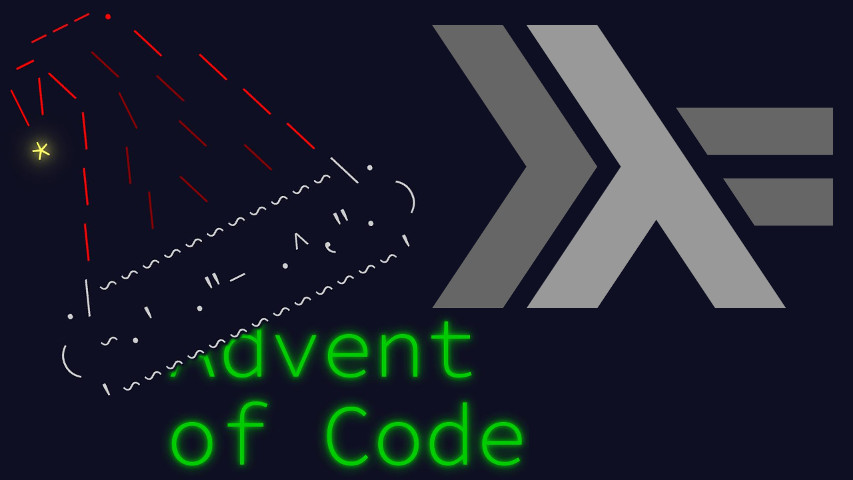Advent of Code day 9 “Smoke Basin” has us study the flow of smoke on uneven terrain. As usual, this post is a literate Haskell program that starts with a few imports.
import Control.Arrow ((&&&))
import Data.Array
import Data.Char (digitToInt)
import Data.List (group,minimumBy,sort,sortOn)
import Data.Ord (comparing,Down(Down))I’ll represent the Cave as an 2D array, so defining a few types will spare typing.
type Pos = (Int,Int)
type Height = Int
type Cave = Array PosFinding a low point is a matter of examining each point and validating its context for minimality.1
lowPoints :: Cave Height -> [(Pos,Height)]
lowPoints c = filter f (assocs c) where
f ((i,j),h) = h < minimum (snd <$> neighbors c (i,j))We can then easily compute the low points’ risk and sum to complete part 1.
risk :: (Pos,Height) -> Int
risk (_,h) = h + 1For part 2, we want to compute the actual basins’ areas. They’re conveniently defined as having a single low point, excluding height 9.2 So I’ll compute the final low point for every point of a basin, defining it recursively as either itself when it’s a low point, or as the low point of its lowest neighbor.3
destinationLP :: Cave Height -> Cave Pos
destinationLP c = d where
d = array (bounds c) [ (p,dest p) | p <- indices c ]
dest p | c!p == 9 = p
| c!p < snd l = p
| otherwise = d ! fst l
where ns = neighbors c p
l = minimumBy (comparing snd) nsI cheat and make height 9 points their own microbasin, so that they don’t get in the way when I aggregate by low point:
basins :: Cave Height -> [[Pos]]
basins = group . sort . elems . destinationLPThe rest is just wrapping and utility functions.
main :: IO ()
main = interact $ show .
( sum . map risk . lowPoints &&&
product . take 3 . sortOn Down . map length . basins ) .
parse
neighbors :: Cave Height -> Pos -> [(Pos,Int)]
neighbors c (i,j) = [ (p,c!p) | p <- [(i-1,j),(i,j+1),(i+1,j),(i,j-1)]
, inRange (bounds c) p ]
parse :: String -> Cave Height
parse = listArray ((0,0),(99,99)) . (concatMap.map) digitToInt . linesThis concludes today’s solution. See you tomorrow!
Yes, I’m aware this is an invitation to comonads.↩︎
Because it avoids having to specify what happens if multiple flow directions are possible. I read right through it, yet appreciate it’s masterfully done.↩︎
Picking the lowest explores all neighbor nodes, but reduces the mean distance to the final low point. But only by a constant factor. As descent bounds that distance to 9 anyway, trying to compare big-Os is a true bigger waste of time than anything that could be lost here.↩︎



